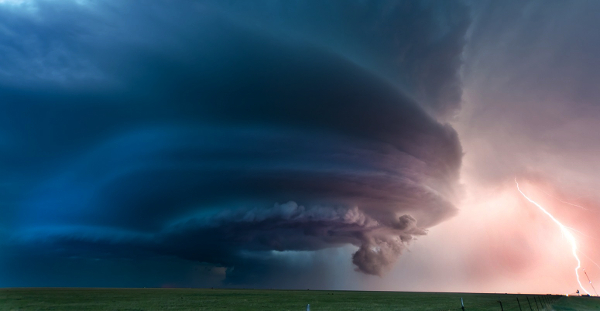Pune: The earliest documented account of tornado dynamics in the history of global meteorology could have been an Indian scientist’s brainchild, revealed a recent research by Pune-based Indian Institute of Tropical Meteorology (IITM).
Researchers at IITM set out to evaluate an over 150-year-old paper on a whirlwind at Pundooah (now Pandua) in West Bengal’s Hooghly district by an Indian scientist, Chunder Sikur Chatterjee.
The researchers told TOI that as per their analysis, Chatterjee work was probably the first scientific paper published by an Indian in an Indian journal.
Here’s the clincher: this 1865 paper was supported by a sketch that meticulously depicted the tornado’s path — an aspect that only made appearance in global scientific papers 100 years later.
The IITM researchers said it was thus possible that the paper by Chatterjee constituted the first meteorological record in the world, in which the horizontal scale of a tornado and its suction spot were accurately evaluated.
To their knowledge, no other accurate historical depictions of tornadoes were produced in those times, even in Europe and America, except Chatterjee’s.
The research, which was jointly undertaken by two IITM scientists, Saumyendu De and A K Sahai, was recently published in the journal. ‘WEATHER’, under Royal Meteorological Society, UK.
De said, “Our research reproduces this paper, which was documented in the Proceedings of the Asiatic Society of Bengal (PASB) in 1865. This was the only scientific journal during those times in Asia. There are many reasons of reproduction of the old paper.”
He added, “As of now, there is no database on the history of Indian meteorology contributed by a ‘native Indian’. In the pre-independence era, the history of Indian meteorology was mainly contributed by British meteorologists such as Blanford, CWB Normand, Gilbert Walker and Henry Piddington.”
De said that the researchers have reason to believe that the paper defined the horizontal scale (extent) of tornado much prior to the scale of tornado actually documented by western and European meteorologists and might be the first specimen of its kind in the history of meteorological records.
The researchers said Chatterjee had benefited from a rare opportunity to observe a whirlwind passing through a location at which there were conveniently placed markers at predefined distance intervals and other items that enabled him to make clear measurements of the sub-tornado vortex and tornado cyclone, arguably for the first time in the history of meteorology.
“It was a combination of the brilliance of Chatterjee and assistance from nature that made it possible for him to evaluate the scale of the tornado,” De said.
Meteorological research in India had started under the British rule and was carried out by the Surveyor General’s Office of India during the 18th and 19th centuries. Chatterjee used to work with the Surveyor General of India when he wrote the paper. However, the researchers could not find any more information on him in past records.
In those times, extreme meteorological events were occasionally recorded in the form of either eyewitness accounts or entries in ships’ logbooks.
“The evidence presented in our research shows that there is a legacy of meteorological research in India, though most of the investigators were British people during the era of British colonialism,” De said.
“One is therefore left with the question: who was the first Indian to publish a meteorological research article in an Indian journal? Our study may have answered this question too,” the scientist added.
Source: ToI
Image Courtesy: Carbon Brief
You may also like
-
New Heat-Based Approach To Cancer Treatment Can Reduce Chemotherapy Doses
-
Scientists Take A Major Step Towards Unification Of Classical & Quantum Gravity
-
India Graphene Engineering and Innovation Centre (IGEIC) Under the Vision of Viksit Bharat@2047 Launched
-
New High-Performance Gas Sensor can Monitor Low Level Nitrogen Oxides Pollution
-
Antidepressant Drug can be Repurposed for Treating Breast Cancer
